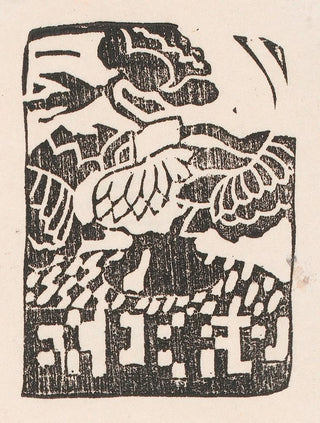Art print | Ex-libris with flower vase - Reijer Stolk


View from behind

Frame (optional)
In the vibrant universe of graphic art, the work "Ex-libris with Flower Vase" by Reijer Stolk stands out for its elegance and delicacy. This piece, at the crossroads between engraving and printmaking, invites us to explore a world where nature harmoniously intertwines with art. The art print, traditionally used to identify the owner of a book, transforms here into a true masterpiece, revealing the artist's sensitivity and unique perspective on the floral world. Contemplating this art print, one is immediately transported into a universe where every detail matters, where each stroke of the pen tells a story.
Style and uniqueness of the work
Reijer Stolk's style is an ode to finesse and meticulousness. In "Ex-libris with Flower Vase," he manages to capture the very essence of nature through delicate lines and harmonious compositions. The depiction of the vase, richly decorated, is enhanced by the presence of carefully chosen flowers, which seem to dance almost on the page. Shades of gray and shadow play give the whole depth and texture that invite attentive observation. Every element, from the shape of the vase to the petals of the flowers, demonstrates undeniable technical mastery. In sum, this work is not just an ex-libris, but a true miniature painting where nature expresses itself with grace and poetry.
The artist and his influence
Reijer Stolk, a Dutch artist of the 18th century, is often regarded as one of the masters of engraving of his time. His work is marked by a constant search for harmony and beauty in the representation of everyday objects. Influenced by the great masters of the Renaissance, Stolk reinvented the codes of graphic art, incorporating elements of nature into compositions that transcend their simple utilitarian function. His work on art prints, of which "Ex-libris with Flower Vase" is an emblematic example, demonstrates his ability to combine aesthetics and functionality. By redefining the role of the art print, Stolk paved the way for a new appreciation of graphic art.

Matte finish

View from behind

Frame (optional)
In the vibrant universe of graphic art, the work "Ex-libris with Flower Vase" by Reijer Stolk stands out for its elegance and delicacy. This piece, at the crossroads between engraving and printmaking, invites us to explore a world where nature harmoniously intertwines with art. The art print, traditionally used to identify the owner of a book, transforms here into a true masterpiece, revealing the artist's sensitivity and unique perspective on the floral world. Contemplating this art print, one is immediately transported into a universe where every detail matters, where each stroke of the pen tells a story.
Style and uniqueness of the work
Reijer Stolk's style is an ode to finesse and meticulousness. In "Ex-libris with Flower Vase," he manages to capture the very essence of nature through delicate lines and harmonious compositions. The depiction of the vase, richly decorated, is enhanced by the presence of carefully chosen flowers, which seem to dance almost on the page. Shades of gray and shadow play give the whole depth and texture that invite attentive observation. Every element, from the shape of the vase to the petals of the flowers, demonstrates undeniable technical mastery. In sum, this work is not just an ex-libris, but a true miniature painting where nature expresses itself with grace and poetry.
The artist and his influence
Reijer Stolk, a Dutch artist of the 18th century, is often regarded as one of the masters of engraving of his time. His work is marked by a constant search for harmony and beauty in the representation of everyday objects. Influenced by the great masters of the Renaissance, Stolk reinvented the codes of graphic art, incorporating elements of nature into compositions that transcend their simple utilitarian function. His work on art prints, of which "Ex-libris with Flower Vase" is an emblematic example, demonstrates his ability to combine aesthetics and functionality. By redefining the role of the art print, Stolk paved the way for a new appreciation of graphic art.






